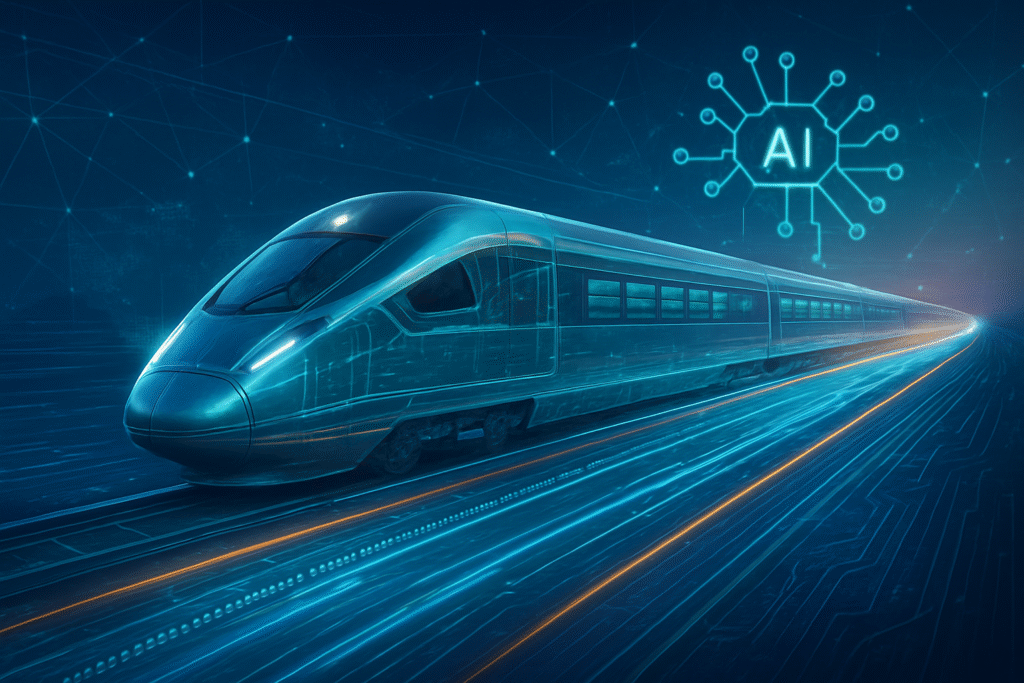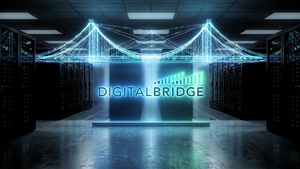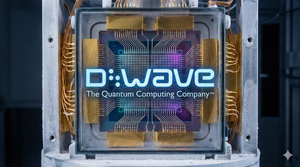
Vienna, Austria – October 20, 2025 – The global railway industry converged in Vienna last week for the Wayside Digitalisation Forum (WDF) 2025, a landmark event that has emphatically charted the course for the future of digital rail signalling. After a six-year hiatus, the forum, hosted by Frauscher Sensor Technology, served as a crucial platform for railway operators, system suppliers, and integrators to unveil and discuss the cutting-edge innovations poised to revolutionize object control and monitoring within rail networks. The overwhelming consensus from the forum is clear: digital signalling is not merely an upgrade, but a fundamental paradigm shift that will underpin the creation of high-performing, safer, and more sustainable railway systems worldwide.
The innovations showcased at WDF 2025 promise an immediate and profound transformation of the rail sector. By enabling reduced train headways, digital signalling is set to dramatically increase network capacity and efficiency, allowing more services to run on existing infrastructure while improving punctuality. Furthermore, these advancements are ushering in an era of enhanced safety through sophisticated collision avoidance and communication systems, coupled with a significant leap towards predictive maintenance. The forum underscored that the integration of AI, IoT, and robust data analytics will not only prevent unplanned downtime and extend asset lifespans but also drive substantial reductions in operational and maintenance costs, cementing digital rail signalling as the cornerstone of the railway's intelligent, data-driven future.
Technical Prowess: Unpacking the Digital Signalling Revolution
The Wayside Digitalisation Forum 2025 delved deep into the technical intricacies that are driving the digital rail signalling revolution, highlighting a shift towards intelligent field elements and standardized, data-driven operations. A core technical advancement lies in the sophisticated capabilities of advanced wayside object control and monitoring. This involves the deployment of intelligent sensors and actuators at crucial points along the track – such as switches, level crossings, and track sections – which can communicate real-time status and operational data. These field elements are designed for seamless integration into diverse signalling systems, offering future-proof concepts for their control and fundamentally transforming traditional signalling logic. The technical specifications emphasize high-fidelity data acquisition, low-latency communication, and robust environmental resilience to ensure reliable performance in challenging railway environments.
These new approaches represent a significant departure from previous, more hardware-intensive and proprietary signalling systems. Historically, rail signalling relied heavily on discrete, electro-mechanical components and fixed block systems, often requiring extensive, costly wiring and manual intervention for maintenance and diagnostics. The digital innovations, by contrast, leverage software-defined functionalities, IP-based communication networks, and modular architectures. This allows for greater flexibility, easier scalability, and remote diagnostics, drastically reducing the physical footprint and complexity of wayside equipment. The integration of Artificial Intelligence (AI) and Internet of Things (IoT) technologies is a game-changer, moving beyond simple status reporting to enable predictive analytics for component failure, optimized traffic flow management, and even autonomous decision-making capabilities within defined safety parameters.
A critical technical theme at WDF 2025 was the push for standardisation and interoperability, particularly through initiatives like EULYNX. EULYNX aims to establish a common language and standardized interfaces for signalling systems, allowing equipment from different suppliers to communicate and integrate seamlessly. This is a monumental shift from the highly fragmented and often vendor-locked systems of the past, which made upgrades and expansions costly and complex. By fostering a plug-and-play environment, EULYNX is accelerating the adoption of digital signalling, optimizing migration strategies for legacy systems, and extending the lifespan of components by ensuring future compatibility. This collaborative approach to technical architecture is garnering strong positive reactions from the AI research community and industry experts, who see it as essential for unlocking the full potential of digital railways across national borders.
Furthermore, the forum highlighted the technical advancements in data-driven operations and predictive maintenance. Robust data acquisition platforms, combined with real-time monitoring and advanced analytics, are enabling railway operators to move from reactive repairs to proactive, condition-based maintenance. This involves deploying a network of sensors that continuously monitor the health and performance of track circuits, points, and other critical assets. AI algorithms then analyze this continuous stream of data to detect anomalies, predict potential failures before they occur, and schedule maintenance interventions precisely when needed. This not only significantly reduces unplanned downtime and operational costs but also enhances safety by addressing potential issues before they escalate, representing a profound technical leap in asset management.
Strategic Shifts: Impact on AI Companies, Tech Giants, and Startups
The rapid evolution of digital rail signalling, amplified by the innovations at WDF 2025, is poised to create significant ripples across the technology landscape, profoundly impacting AI companies, established tech giants, and agile startups alike. Companies specializing in sensor technology, data analytics, and AI/ML platforms stand to benefit immensely. Firms like Frauscher Sensor Technology, a key organizer of the forum, are at the forefront, providing the intelligent wayside sensors crucial for data collection. The recent 2024 acquisition of Frauscher by Wabtec Corporation (NYSE: WAB) underscores the strategic importance of this sector, significantly strengthening Wabtec's position in advanced signalling and digital rail technology. This move positions Wabtec to offer more comprehensive, integrated solutions, giving them a competitive edge in the global market for digital rail infrastructure.
The competitive implications for major AI labs and tech companies are substantial. While traditional rail signalling has been the domain of specialized engineering firms, the shift towards software-defined, data-driven systems opens the door for tech giants with strong AI and cloud computing capabilities. Companies like Siemens AG (XTRA: SIE), with its extensive digital industries portfolio, and Thales S.A. (EPA: HO) are already deeply entrenched in rail transport solutions and are now leveraging their AI expertise to develop advanced traffic management, predictive maintenance, and autonomous operation platforms. The forum's emphasis on cybersecurity also highlights opportunities for firms specializing in secure industrial IoT and critical infrastructure protection, potentially drawing in cybersecurity leaders to partner with rail technology providers.
This development poses a potential disruption to existing products and services, particularly for companies that have relied on legacy, hardware-centric signalling solutions. The move towards standardized, interoperable systems, as championed by EULYNX, could commoditize certain hardware components while elevating the value of sophisticated software and AI-driven analytics. Startups specializing in niche AI applications for railway optimization – such as AI-powered vision systems for track inspection, predictive algorithms for energy efficiency, or real-time traffic flow optimization – are likely to find fertile ground. Their agility and focus on specific problem sets allow them to innovate rapidly and partner with larger players, offering specialized solutions that enhance the overall digital rail ecosystem.
Market positioning and strategic advantages will increasingly hinge on the ability to integrate diverse technologies into cohesive, scalable platforms. Companies that can provide end-to-end digital solutions, from intelligent wayside sensors and secure communication networks to cloud-based AI analytics and operational dashboards, will gain a significant competitive advantage. The forum underscored the importance of collaboration and partnerships, suggesting that successful players will be those who can build strong alliances across the value chain, combining hardware expertise with software innovation and AI capabilities to deliver comprehensive, future-proof digital rail signalling solutions.
Wider Significance: Charting the Course for AI in Critical Infrastructure
The innovations in digital rail signalling discussed at the Wayside Digitalisation Forum 2025 hold a much wider significance, extending beyond the railway sector to influence the broader AI landscape and trends in critical infrastructure. This development perfectly aligns with the growing trend of AI permeating industrial control systems and operational technology (OT), moving from theoretical applications to practical, real-world deployments in high-stakes environments. The rail industry, with its stringent safety requirements and complex operational demands, serves as a powerful proving ground for AI's capabilities in enhancing reliability, efficiency, and safety in critical national infrastructure.
The impacts are multi-faceted. On one hand, the successful implementation of AI in rail signalling will accelerate the adoption of similar technologies in other transport sectors like aviation and maritime, as well as in utilities, energy grids, and smart city infrastructure. It demonstrates AI's potential to manage highly dynamic, interconnected systems with a level of precision and responsiveness previously unattainable. This also validates the significant investments being made in Industrial IoT (IIoT), as the collection and analysis of vast amounts of sensor data are fundamental to these digital signalling systems. The move towards digital twins for comprehensive predictive analysis, as highlighted at the forum, represents a major step forward in operational intelligence across industries.
However, with such transformative power come potential concerns. Cybersecurity was rightly identified as a crucial consideration. Integrating AI and network connectivity into critical infrastructure creates new attack vectors, making robust cybersecurity frameworks and continuous threat monitoring paramount. The reliance on complex algorithms also raises questions about algorithmic bias and transparency, particularly in safety-critical decision-making processes. Ensuring that AI systems are explainable, auditable, and free from unintended biases will be a continuous challenge. Furthermore, the extensive automation could lead to job displacement for roles traditionally involved in manual signalling and maintenance, necessitating proactive reskilling and workforce transition strategies.
Comparing this to previous AI milestones, the advancements in digital rail signalling represent a significant step in the journey of "embodied AI" – where AI systems are not just processing data in the cloud but are directly interacting with and controlling physical systems in the real world. This goes beyond the breakthroughs in natural language processing or computer vision by demonstrating AI's ability to manage complex, safety-critical physical processes. It echoes the early promise of AI in industrial automation but on a far grander, more interconnected scale, setting a new benchmark for AI's role in orchestrating the invisible backbone of modern society.
Future Developments: The Tracks Ahead for Intelligent Rail
The innovations unveiled at the Wayside Digitalisation Forum 2025 are merely the beginning of a dynamic journey for intelligent rail, with expected near-term and long-term developments promising even more profound transformations. In the near term, we can anticipate a rapid expansion of AI-powered predictive maintenance solutions, moving from pilot projects to widespread deployment across major rail networks. This will involve more sophisticated AI models capable of identifying subtle anomalies and predicting component failures with even greater accuracy, leveraging diverse data sources including acoustic, thermal, and vibration signatures. We will also see an accelerated push for the standardization of interfaces (e.g., EULYNX), leading to quicker integration of new digital signalling components and a more competitive market for suppliers.
Looking further into the long term, the horizon includes the widespread adoption of fully autonomous train operations. While significant regulatory and safety hurdles remain, the technical foundations being laid today – particularly in precise object detection, secure communication, and AI-driven decision-making – are paving the way. This will likely involve a phased approach, starting with higher levels of automation in controlled environments and gradually expanding. Another key development will be the proliferation of digital twins of entire rail networks, enabling real-time simulation, optimization, and scenario planning for traffic management, maintenance, and even infrastructure expansion. These digital replicas, powered by AI, will allow operators to test changes and predict outcomes before implementing them in the physical world.
Potential applications and use cases on the horizon include dynamic capacity management, where AI algorithms can instantly adjust train schedules and routes based on real-time demand, disruptions, or maintenance needs, maximizing network throughput. Enhanced passenger information systems, fed by real-time AI-analyzed operational data, will provide highly accurate and personalized travel updates. Furthermore, AI will play a crucial role in energy optimization, fine-tuning train speeds and braking to minimize power consumption and carbon emissions, aligning with global sustainability goals.
However, several challenges need to be addressed. Regulatory frameworks must evolve to accommodate the complexities of AI-driven autonomous systems, particularly concerning accountability in the event of incidents. Cybersecurity threats will continuously escalate, requiring ongoing innovation in threat detection and prevention. The upskilling of the workforce will be paramount, as new roles emerge that require expertise in AI, data science, and digital systems engineering. Experts predict that the next decade will be defined by the successful navigation of these challenges, leading to a truly intelligent, resilient, and high-capacity global rail network, where AI is not just a tool but an integral co-pilot in operational excellence.
Comprehensive Wrap-up: A New Epoch for Rail Intelligence
The Wayside Digitalisation Forum 2025 has indisputably marked the dawn of a new epoch for rail intelligence, firmly positioning digital rail signalling innovations at the core of the industry's future. The key takeaways are clear: digital signalling is indispensable for enhancing network capacity, dramatically improving safety, and unlocking unprecedented operational efficiencies through predictive maintenance and data-driven decision-making. The forum underscored the critical roles of standardization, particularly EULYNX, and collaborative efforts in accelerating this transformation, moving the industry from fragmented legacy systems to an integrated, intelligent ecosystem.
This development's significance in AI history cannot be overstated. It represents a tangible and impactful application of AI in critical physical infrastructure, demonstrating its capability to manage highly complex, safety-critical systems in real-time. Unlike many AI advancements that operate in the digital realm, digital rail signalling showcases embodied AI directly influencing the movement of millions of people and goods, setting a precedent for AI's broader integration into the physical world. It validates the long-held vision of intelligent automation, moving beyond simple automation to cognitive automation that can adapt, predict, and optimize.
Our final thoughts lean towards the immense long-term impact on global connectivity and sustainability. A more efficient, safer, and higher-capacity rail network, powered by AI, will be pivotal in reducing road congestion, lowering carbon emissions, and fostering economic growth through improved logistics. The shift towards predictive maintenance and optimized operations will not only save billions but also extend the lifespan of existing infrastructure, making rail a more sustainable mode of transport for decades to come.
What to watch for in the coming weeks and months will be the concrete implementation plans from major rail operators and signalling providers, particularly how they leverage the standardized interfaces promoted at WDF 2025. Keep an eye on partnerships between traditional rail companies and AI specialists, as well as new funding initiatives aimed at accelerating digital transformation. The evolving regulatory landscape for autonomous rail operations and the continuous advancements in rail cybersecurity will also be crucial indicators of progress towards a fully intelligent and interconnected global rail system.
This content is intended for informational purposes only and represents analysis of current AI developments.
TokenRing AI delivers enterprise-grade solutions for multi-agent AI workflow orchestration, AI-powered development tools, and seamless remote collaboration platforms.
For more information, visit https://www.tokenring.ai/.







